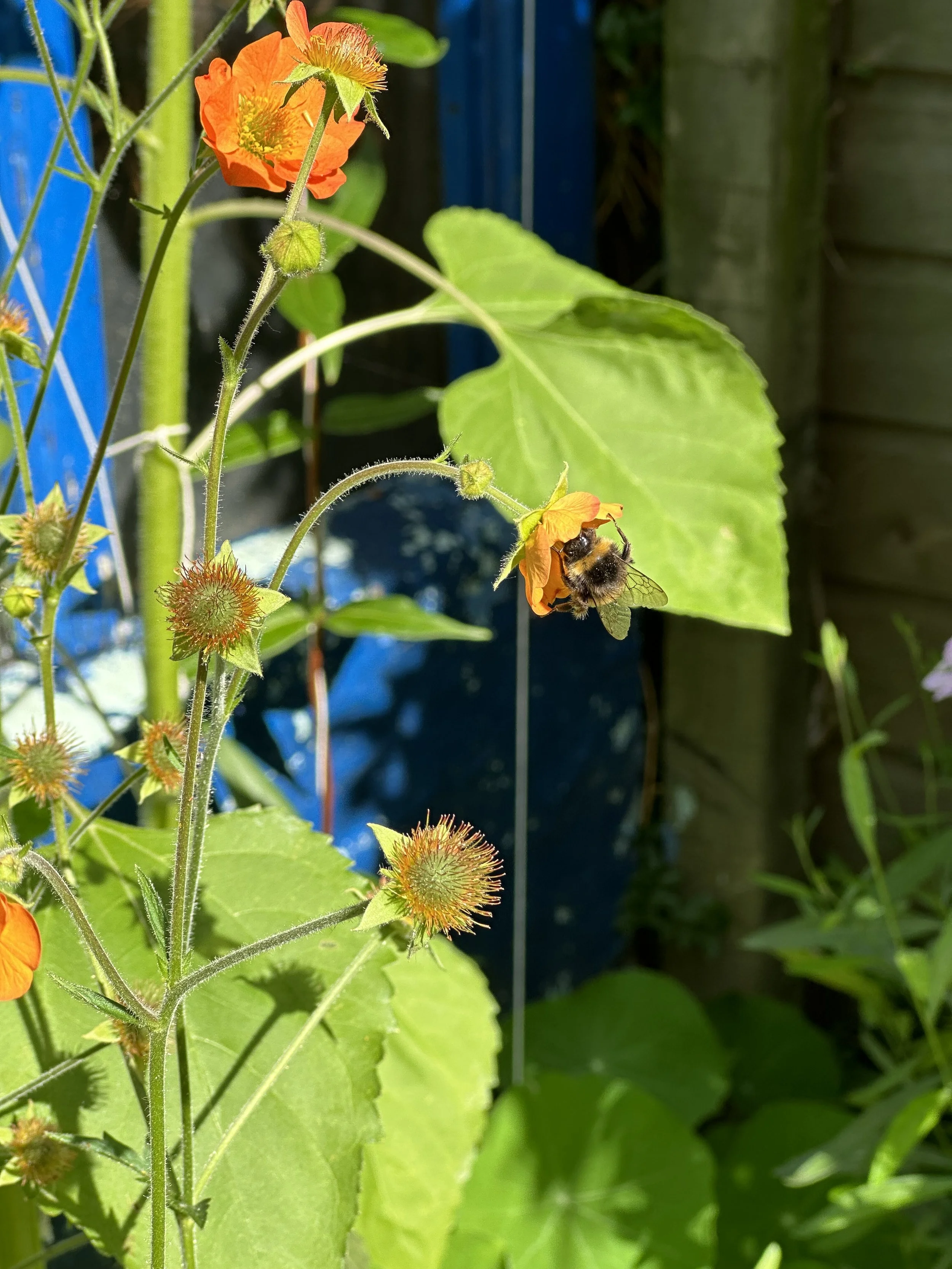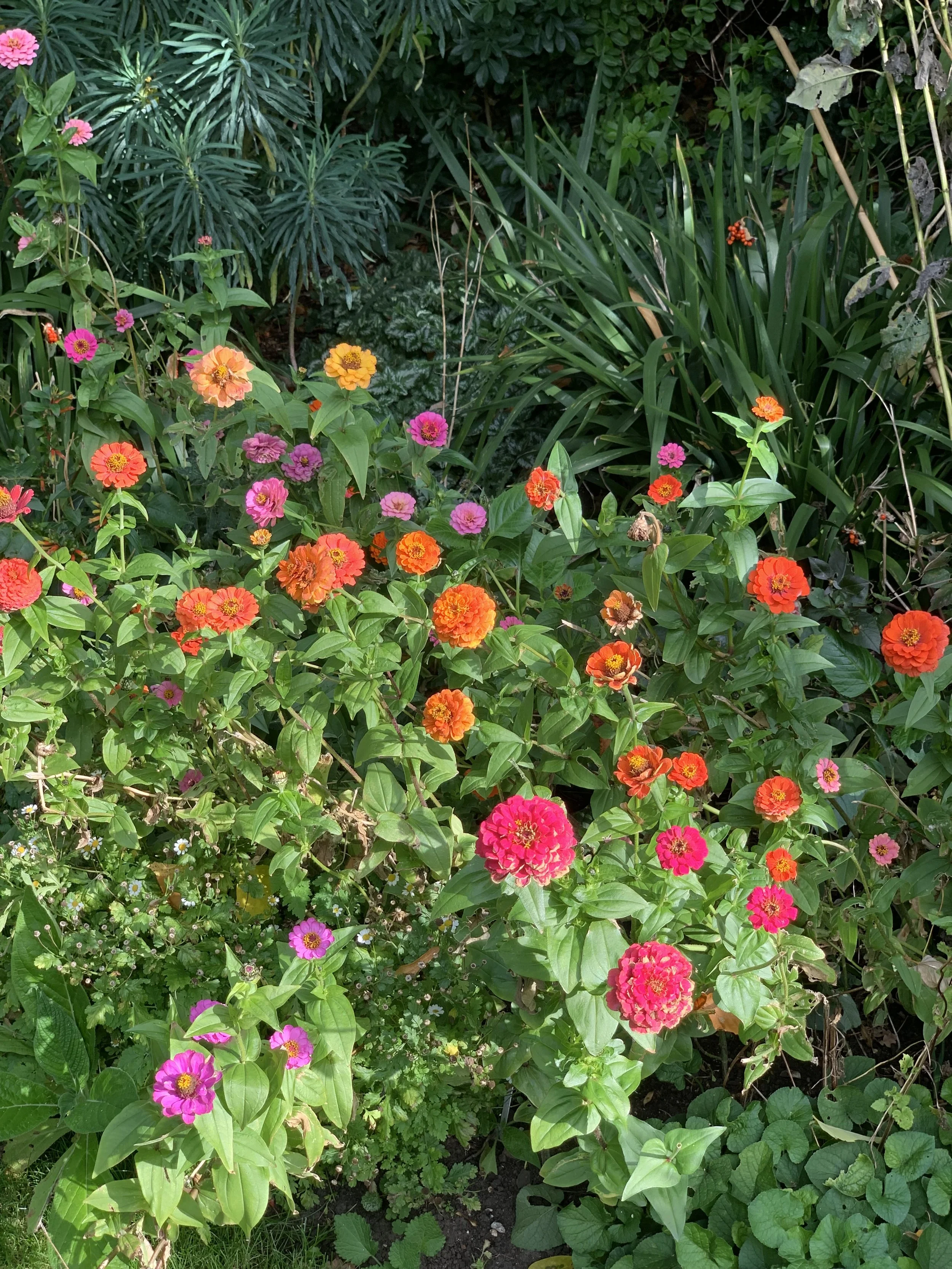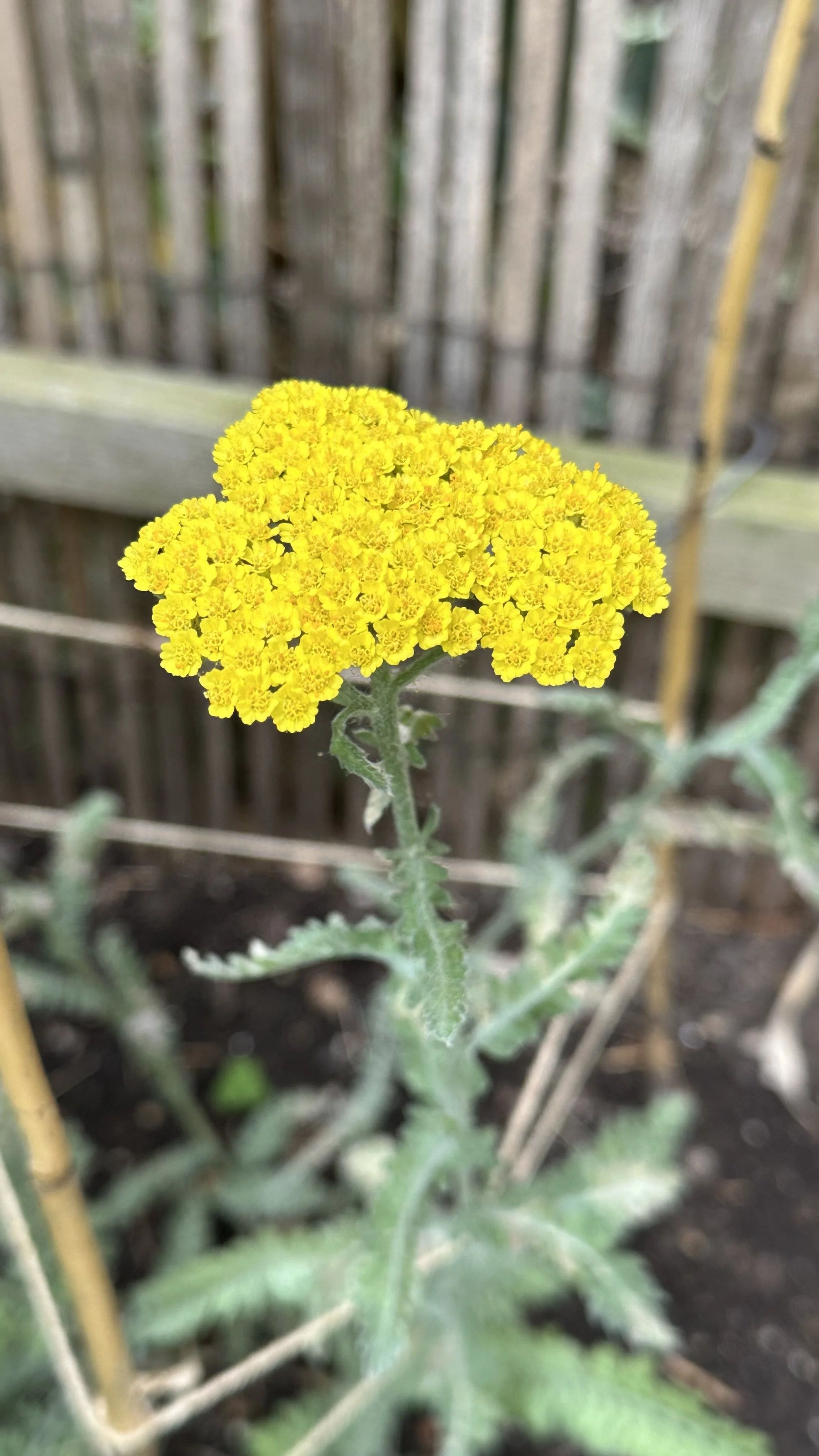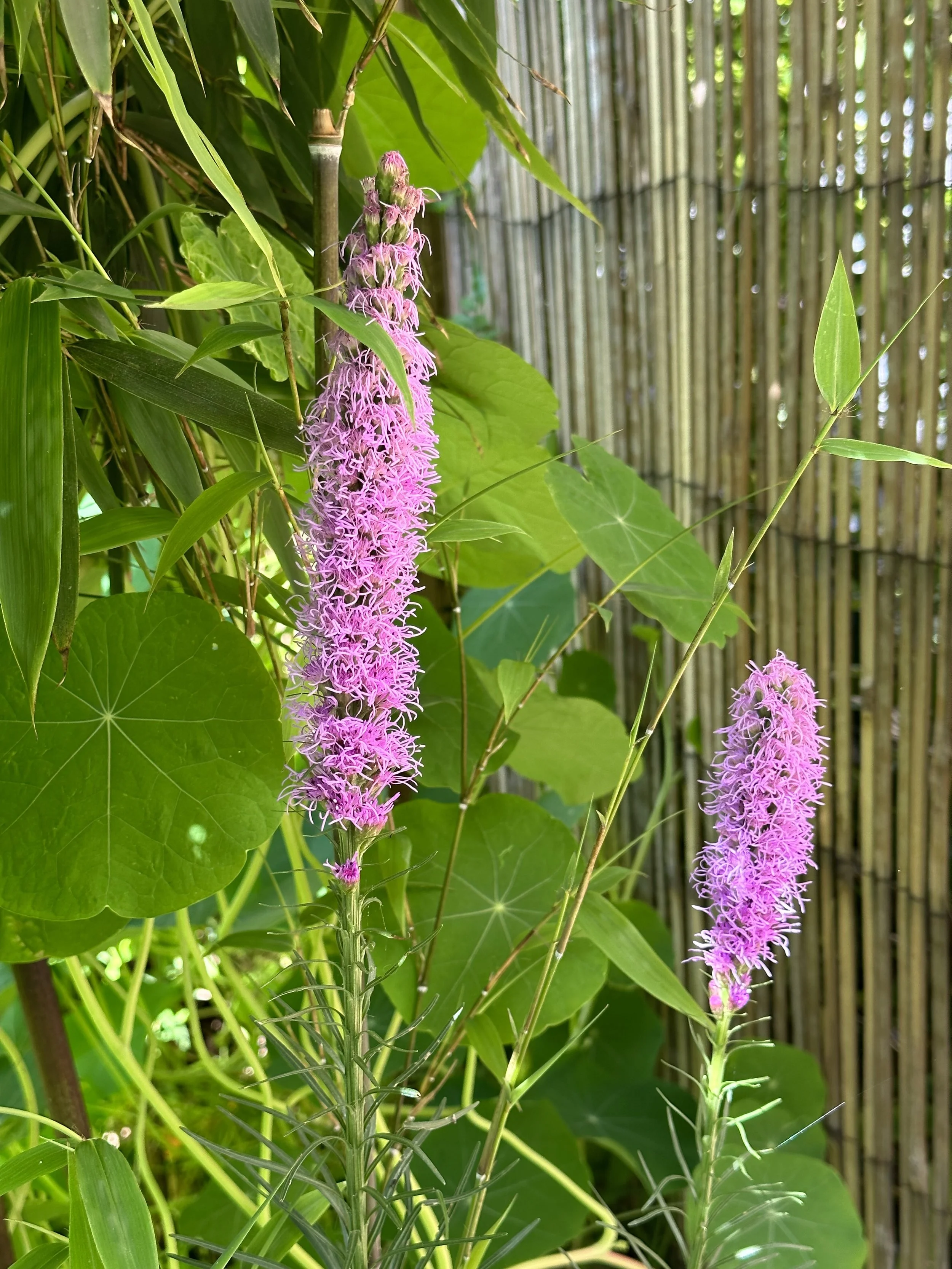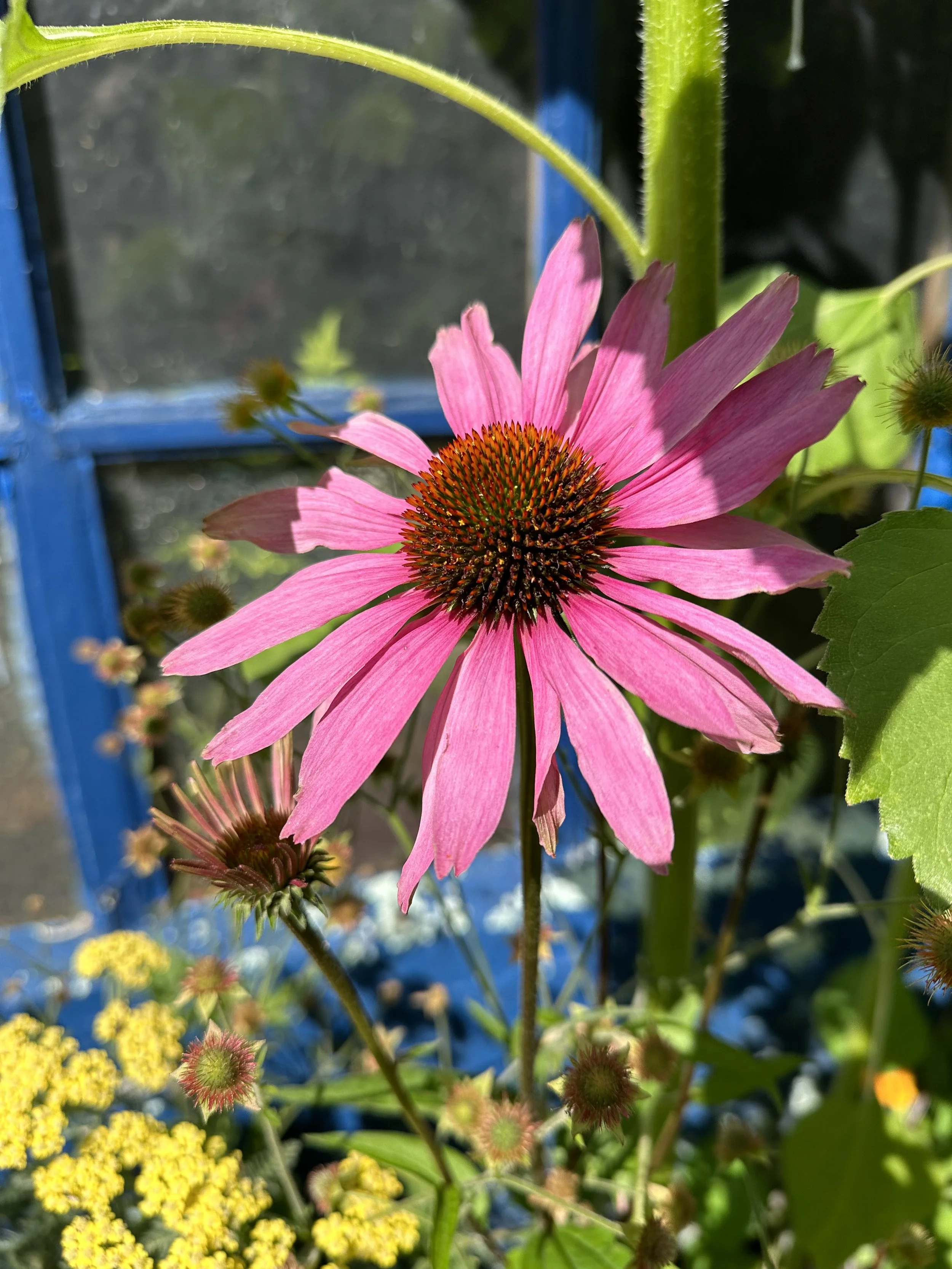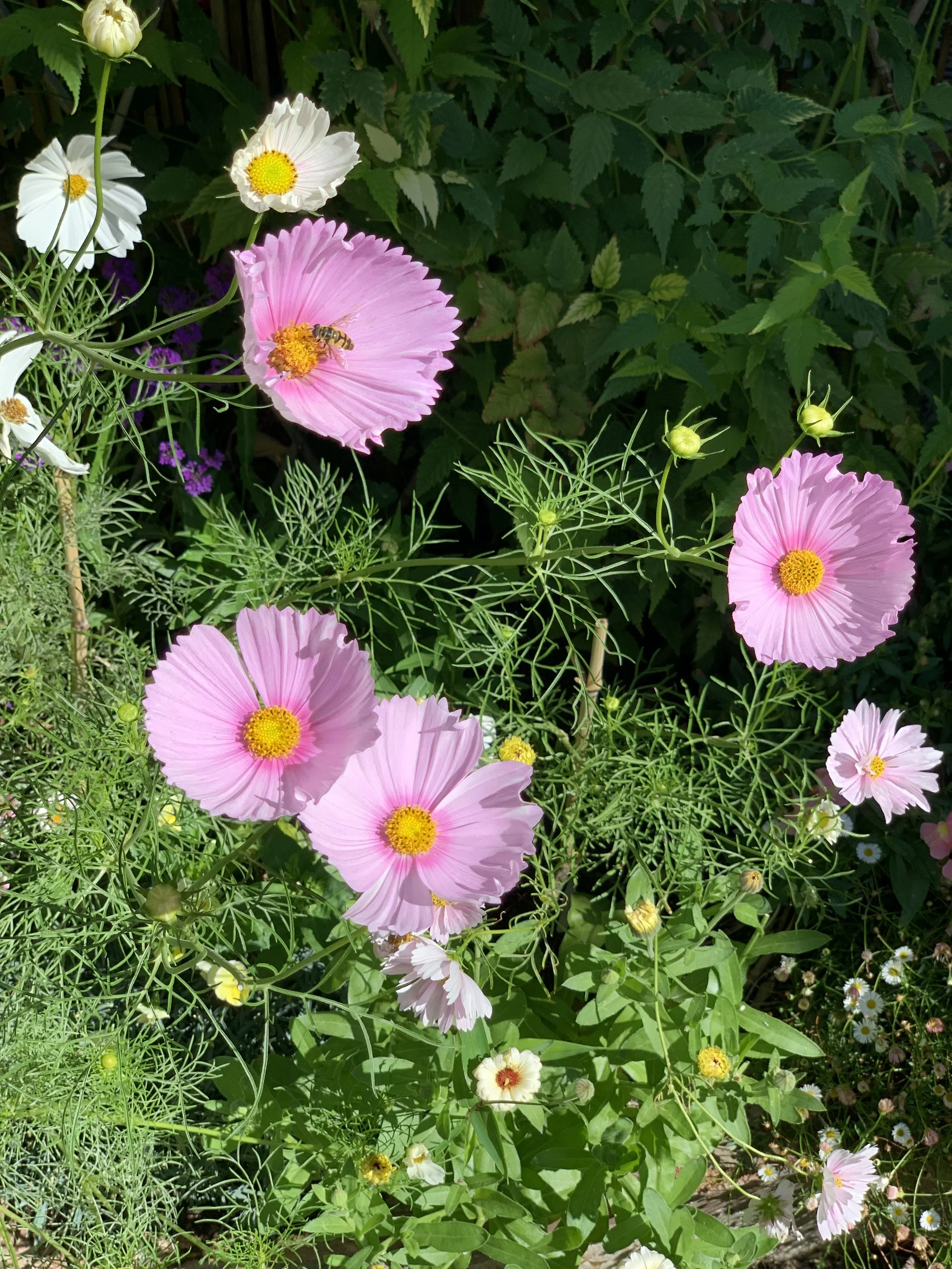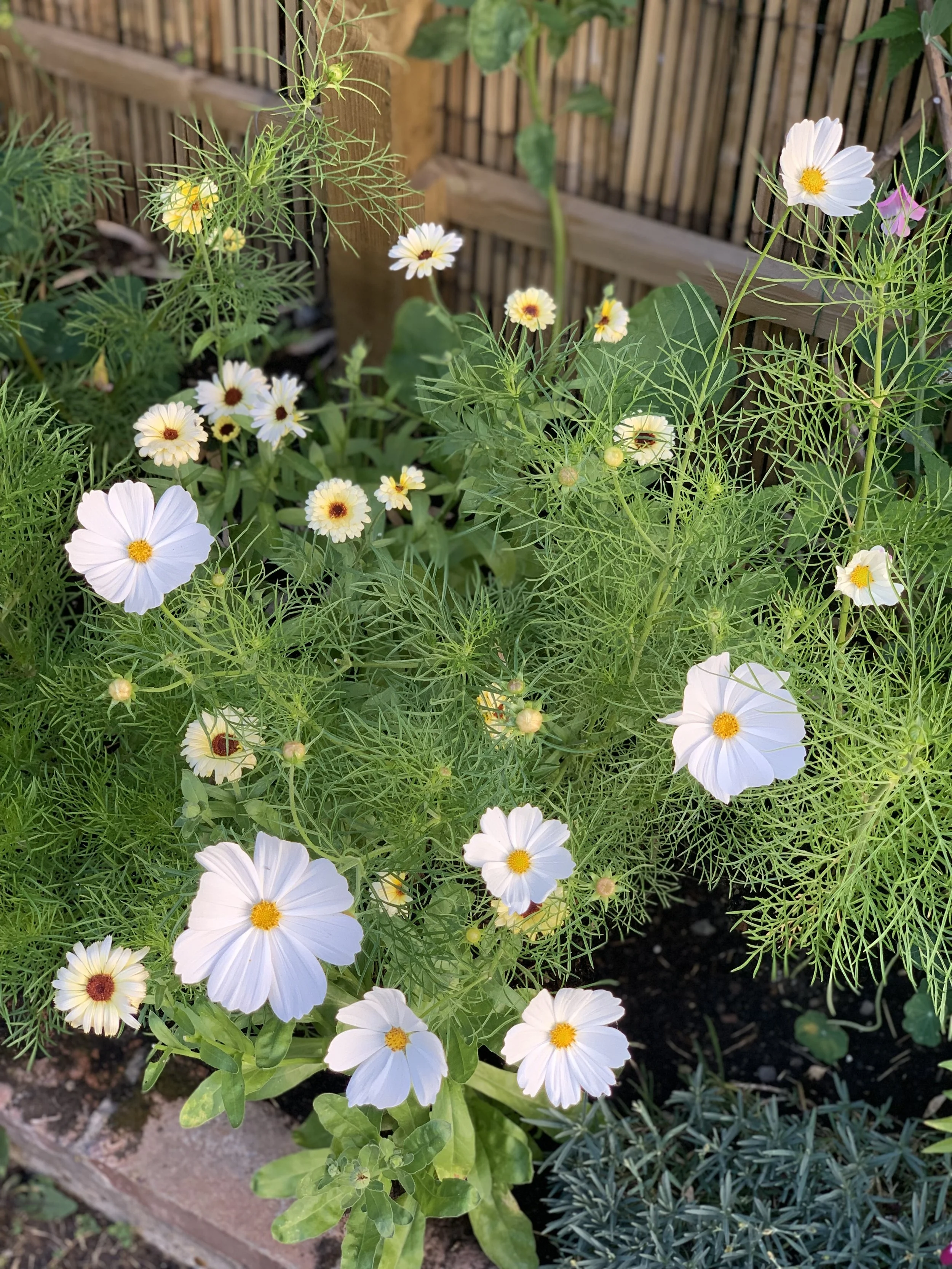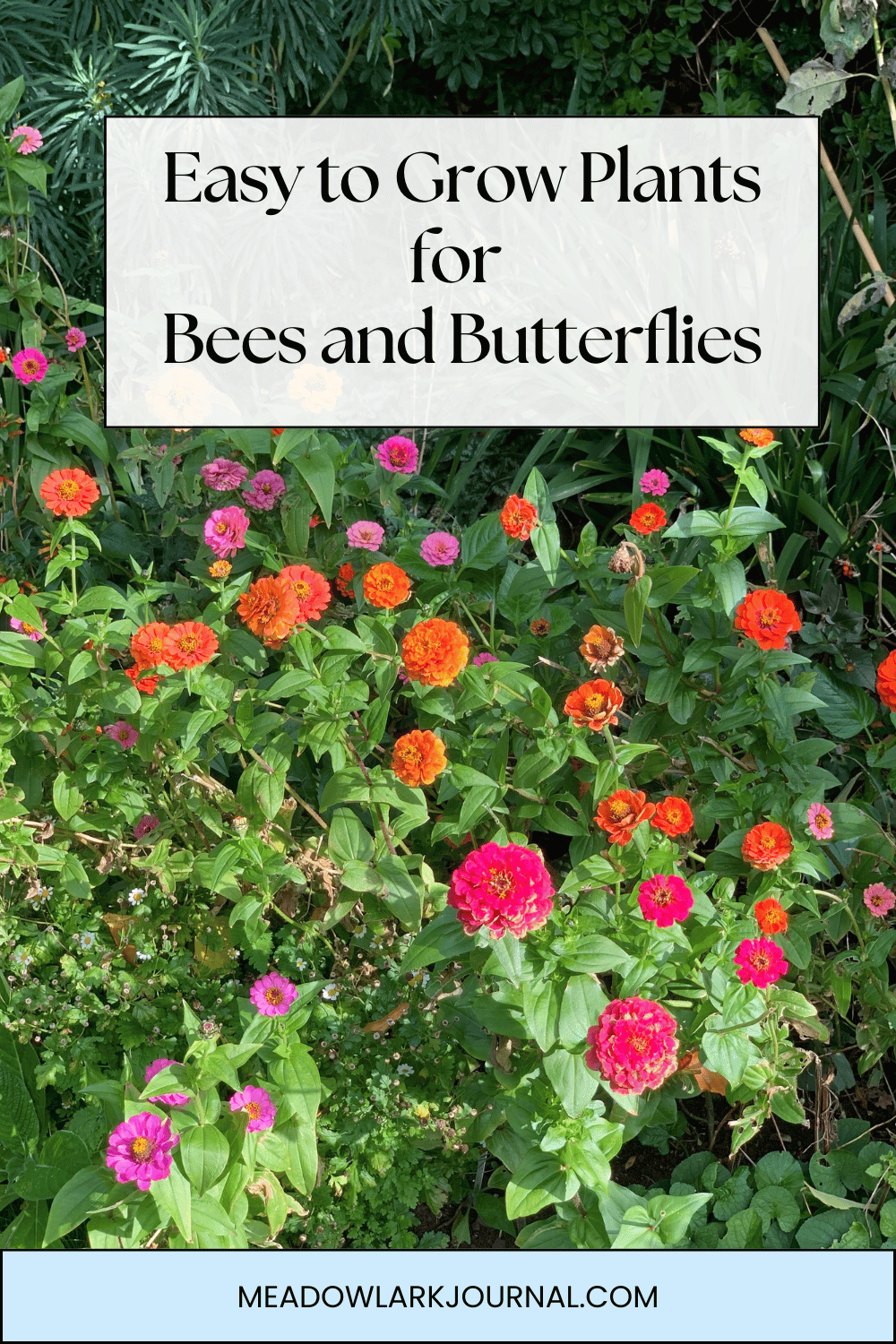Easy to Grow Plants for Bees and Butterflies
This website is reader-supported - thank you! This post may contain affiliate links. As an Amazon Associate, I earn from qualifying purchases at no extra cost to you.
Creating a garden that attracts bees and butterflies is not only beautiful but also beneficial for the environment.
By choosing the right plants, you can draw these beneficial insects to your garden, ensuring pollination and a thriving ecosystem.
Plants for bees and butterflies, such as bee balm and lavender, serve as friendly plants that provide essential nectar and pollen.
These flowers attract and sustain a variety of pollinators, transforming your garden into a stunning haven for both bees and butterflies.
Join me as we explore the best plants to grow for a buzzing paradise.
To learn more about pollinator-friendly gardens, check out my guides:
Best Plants to Attract Bees
Bees play a crucial role in pollination, and you can attract them to your garden with a few strategic plant choices.
Here are the best plants to attract bees:
Bee Balm (Monarda)
Bee balm is a fantastic choice for attracting bees.
This plant produces vibrant, tubular flowers that bees find irresistible.
Bee balm thrives in full sun and well-drained soil.
It's a perennial plant, meaning it will come back year after year, providing a reliable food source for bees.
Here is the bee balm I recommend growing:
For more tips, check out my guides:
Lavender (Lavandula)
Lavender is not only a fragrant addition to the garden but also a magnet for bees.
Its clusters of small, purple flowers bloom throughout the summer, offering a continuous nectar supply.
Lavender prefers full sun and well-drained soil, making it an easy-to-care-for option.
To learn more about growing lavender, check out my guide: Lavender Companion Plants: Enhancing Your Herb Garden.
Here is the lavender I recommend growing:
Sunflowers (Helianthus)
Sunflowers are a cheerful addition to any garden and are excellent for attracting bees.
Their large, bright blooms provide ample pollen and nectar.
Plant sunflowers in a sunny spot with rich, well-drained soil, and watch as they grow tall and attract bees throughout the summer.
To learn more about growing sunflowers, check out my guide: The Best Time to Plant Sunflowers.
Here are the sunflowers I recommend growing:
Borage (Borago officinalis)
Borage is another excellent bee-attracting plant.
Its star-shaped, blue flowers are a favorite among bees.
Borage is an annual plant that self-seeds readily, ensuring a continuous presence in your garden.
It prefers full sun and well-drained soil.
Learn more: Borage Companion Planting: The Best Pairings.
Here is the borage I recommend growing:
Sage (Salvia)
Sage is a versatile plant that bees love.
The plant produces spikes of tubular flowers in various colors, from purple to red, and blooms over a long period.
Sage thrives in full sun and well-drained soil, and it also has the added benefit of being drought-tolerant once established.
To learn more about growing sage, check out my guide: Sage Companion Plants: Boost Your Garden's Health.
Here is the sage I recommend growing:
Cosmos (Cosmos bipinnatus)
Cosmos are easy-to-grow annuals that produce daisy-like flowers in a range of colors.
These flowers are attractive to bees and other pollinators.
Cosmos thrive in full sun and can tolerate poor soil conditions, making them a low-maintenance choice.
To learn more about growing cosmos, check out my guide: Container Cosmos: How to Grow Cosmos in Small Spaces.
Here are the cosmos I recommend growing:
Best Plants to Attract Butterflies
Butterflies add a touch of magic to any garden, and you can easily attract them by planting the right flowers.
Here are the best plants to attract butterflies to your garden:
Purple Coneflower (Echinacea)
Purple coneflower, also known as echinacea, is a standout for attracting butterflies.
Its large, purple blooms provide a perfect landing pad and a rich source of nectar.
Plant it in full sun and well-drained soil for best results.
It's a hardy perennial, making it a long-lasting addition to your garden.
To learn more about growing echinacea, check out my guide The Perfect Partners: Echinacea Companion Planting Guide.
Here is the echinacea I recommend growing:
Butterfly Bush (Buddleja)
True to its name, the butterfly bush is irresistible to butterflies.
It produces dense clusters of small, tubular flowers in various colors.
This shrub thrives in full sun and well-drained soil, and it blooms from summer to fall, providing continuous nectar for butterflies.
Here is the butterfly bush I recommend growing:
Milkweed (Asclepias)
Milkweed is essential for monarch butterflies, as it serves as both a nectar source and a host plant for their larvae.
Common milkweed, swamp milkweed, and butterfly weed are all excellent choices.
Plant milkweed in a sunny spot with well-drained soil to attract and support monarchs.
Here is the milkweed I recommend growing:
Lantana (Lantana camara)
Lantana is a butterfly magnet with its brightly colored flower clusters.
This plant is versatile and can be grown as a shrub or ground cover.
It prefers full sun and well-drained soil.
Lantana blooms throughout the growing season, offering a consistent nectar source for butterflies.
Here is the lantana I recommend growing:
Zinnia (Zinnia elegans)
Zinnias are easy-to-grow annuals that come in a rainbow of colors.
Their flat, open blooms make it easy for butterflies to access nectar.
Plant zinnias in full sun and average soil, and deadhead spent blooms to encourage continuous flowering.
To learn more about growing zinnias, check out my guide: Zinnia Companion Plants: Enhancing Biodiversity.
Here are the zinnias I recommend growing:
Verbena (Verbena spp.)
Verbena is a great choice for attracting butterflies with its clusters of small, nectar-rich flowers.
It can be grown as an annual or perennial, depending on your climate.
Verbena prefers full sun and well-drained soil, and it blooms from spring to fall.
Here is the verbena I recommend growing:
Dual-purpose Plants for Both Bees and Butterflies
If you want to attract both bees and butterflies, there are several plants that can do double duty.
These plants not only provide nectar and pollen but also add a splash of color and texture to your garden.
Black-eyed Susan (Rudbeckia hirta)
Black-eyed Susan is a favorite for both bees and butterflies.
Its bright yellow petals and dark centers make it a standout in any garden.
This plant thrives in full sun and well-drained soil.
It's a hardy perennial that blooms from summer to fall, providing a long-lasting food source.
Here is the black-eyed susan I recommend:
Sedum (Sedum spp.)
Sedum, also known as stonecrop, is a succulent that attracts bees and butterflies with its clusters of small, star-shaped flowers.
This plant is drought-tolerant and thrives in full sun with well-drained soil.
Sedum blooms in late summer to fall, providing a valuable nectar source when other flowers are starting to fade.
To learn more about growing sedum, check out my guide How to Propagate Sedum.
Here is the sedum I recommend:
Yarrow (Achillea millefolium)
Yarrow is a hardy perennial that produces flat-topped clusters of tiny flowers.
These flowers are highly attractive to both bees and butterflies.
Yarrow thrives in full sun and well-drained soil.
It's also drought-tolerant and can adapt to a variety of soil conditions.
Its long blooming period from late spring to early fall makes it a reliable source of nectar.
To learn more about growing yarrow, check out my guide: Companion Planting Yarrow: Attracting Beneficial Insects.
Here is the yarrow I recommend growing:
Blanket Flower (Gaillardia)
Blanket flower is a sun-loving perennial with vibrant, daisy-like flowers that attract bees and butterflies.
It thrives in full sun and well-drained soil.
Blanket flower blooms from early summer to fall, offering a long season of nectar.
It's also drought-tolerant and requires minimal maintenance.
Here is the blanket flower I reccomend:
Liatris (Liatris spicata)
Liatris, also known as blazing star or gayfeather, produces tall spikes of purple flowers that are a favorite among bees and butterflies.
This perennial prefers full sun and well-drained soil.
It blooms in mid to late summer, adding height and texture to your garden while providing a valuable food source for pollinators.
To learn more about growing liatris, check out my guide: Growing Liatris from Seed: Simple Steps.
Here is the liatris I recommend:
Liatris.
List of the Top Pollinator-Friendly Plants
Creating a garden that supports a wide variety of pollinators starts with choosing the right plants.
Here are the top pollinator-friendly plants:
1. Bee Balm (Monarda)
Thrives in full sun and well-drained soil
Vibrant tubular flowers attract bees and butterflies
2. Lavender (Lavandula)
Fragrant, purple blooms loved by bees
Prefers full sun and well-drained soil
3. Sunflowers (Helianthus)
Large, bright blooms provide ample nectar and pollen
Best in full sun with rich, well-drained soil
4. Purple Coneflower (Echinacea)
Wide, purple blooms attract butterflies
Grows well in full sun and well-drained soil
5. Butterfly Bush (Buddleja)
Dense clusters of flowers in various colors
Thrives in full sun and well-drained soil
6. Milkweed (Asclepias)
Essential for monarch butterflies
Prefers full sun and well-drained soil
7. Lantana (Lantana camara)
Brightly colored flower clusters
Versatile, can be grown as a shrub or ground cover
8. Zinnia (Zinnia elegans)
Flat, open blooms in a range of colors
Thrives in full sun and average soil
9. Verbena (Verbena spp.)
Clusters of small, nectar-rich flowers
Blooms from spring to fall, prefers full sun
10. Black-eyed Susan (Rudbeckia hirta)
Bright yellow petals with dark centers
Hardy perennial that blooms from summer to fall
11. Cosmos (Cosmos bipinnatus)
Daisy-like flowers in various colors
Easy to grow, tolerates poor soil
12. Sedum (Sedum spp.)
Succulent with star-shaped flowers
Drought-tolerant, blooms in late summer to fall
13. Yarrow (Achillea millefolium)
Flat-topped clusters of tiny flowers
Drought-tolerant, long blooming period
14. Liatris (Liatris spicata)
Tall spikes of purple flowers
Blooms in mid to late summer, prefers full sun
15. Blanket Flower (Gaillardia)
Vibrant, daisy-like flowers
Blooms from early summer to fall, drought-tolerant
Tips for a Successful Pollinator Garden
Creating a thriving pollinator garden involves several strategies to ensure it attracts and supports a variety of beneficial insects and birds.
Choose a Sunny Spot
Most pollinator plants thrive in full sun, so choose a location that receives at least six hours of sunlight a day.
This encourages healthy growth and abundant blooms, which are crucial for drawing pollinators.
A south-facing, south-west facing or west-facing garden location is best.
Provide a Variety of Plants
Diversity is essential in a pollinator garden.
Plant a mix of flowers that bloom at different times throughout the growing season to provide a continuous food source.
Include various shapes, sizes, and colors to attract different types of pollinators.
For example, plants with wide blooms attract butterflies, while tubular flowers are perfect for bees and hummingbirds.
To learn more, check out my guide: The Art of Chaos Gardening: A Guide to Growing Wild.
Use Native Plants
Native plants are adapted to your local climate and soil conditions, making them easier to grow and maintain.
They also provide familiar food sources for local pollinators.
To learn more about wildflowers, check out my guide: How to Create a Wildflower Front Yard.
Avoid Pesticides
Pesticides can harm beneficial insects like bees and butterflies.
Instead, use natural pest control methods such as introducing beneficial insects, using insecticidal soaps, or planting pest-repellent plants.
This helps create a safe environment for pollinators.
To learn more about companion planting, check out my guide: Rosemary Companion Plants: Enhancing Your Garden's Health.
Provide Water Sources
Pollinators need water to thrive.
Include shallow water sources like birdbaths, puddling areas for butterflies, or shallow dishes with pebbles for bees to rest on.
Ensure these water sources are regularly cleaned and replenished.
Create Shelter
Pollinators need places to rest and take shelter.
Include features like logs, stones, or bee hotels to provide nesting sites and protection from the elements.
Dense plantings and ground cover can also offer shelter.
This bee hotel is perfect for providing nesting sites for bees:
Maintain Your Garden
Regular garden maintenance is essential for healthy plants and attractive blooms.
Deadhead spent blooms to encourage more flowers and allow some seed heads to remain as they attract birds.
Remove weeds that compete for resources, and provide mulch to retain soil moisture and reduce weeds.
Periodically check for signs of disease or pests and address them promptly.
Consider Hardiness Zones
Choose plants that are appropriate for your local hardiness zones.
This ensures that the plants can survive and thrive in your climate, providing consistent food sources for pollinators.
Use the USDA Plant Hardiness Zone Map to determine your hardiness zone.
How to Source Pollinator-Friendly Plants for Your Garden
Finding the right plants for your pollinator garden is essential.
Here are some tips on how to source pollinator-friendly plants:
Visit Local Nurseries
Local nurseries often carry native plants that are well-suited to your area's climate and soil conditions.
They can also provide expert advice on plant care and the best plants to draw pollinators.
Online Plant Retailers
There are many online retailers specializing in pollinator-friendly plants.
Websites like Prairie Moon Nursery and American Meadows offer a wide selection of plants that provide food and habitat for pollinators.
Make sure to choose plants appropriate for your hardiness zone.
Community Plant Sales
Check for community plant sales or swaps organized by local gardening clubs or conservation groups.
These events can be a great way to find native and pollinator-friendly plants, often at lower prices.
Botanical Gardens and Arboretums
Botanical gardens and arboretums often have plant sales and can be a valuable resource for finding pollinator-friendly plants.
They might also offer educational programs on gardening and plant care.
Ensure Plant Health
When sourcing plants, whether from nurseries or online, ensure they are healthy and free from pesticides.
Organic and sustainably grown plants are preferable, as they are less likely to have harmful residues that could affect pollinators.
FAQs
What are the best plants for bees and butterflies in the UK?
In the UK, some of the best plants to attract bees and butterflies include lavender, bee balm, and purple coneflower.
Lavender provides a steady supply of nectar throughout the summer, while bee balm's tubular flowers are perfect for bees.
Purple coneflower offers wide blooms that attract butterflies.
These plants thrive in the UK climate and provide essential food sources for pollinators.
How can I attract pollinators to my garden in Ontario?
To attract pollinators in Ontario, focus on native plants like milkweed, black-eyed Susan, and goldenrod.
Milkweed is essential for monarch butterflies, while black-eyed Susan and goldenrod provide nectar for various pollinators.
Ensure your garden has full sun and well-drained soil.
Incorporating a mix of early, mid, and late-season bloomers will provide a continuous food supply.
What soil conditions are best for pollinator plants?
Most pollinator plants prefer well-draining soil that retains some moisture.
Adding compost can improve soil fertility and structure, making it more suitable for pollinator-friendly plants.
Ensuring the soil has the right balance of nutrients will support healthy plant growth and abundant blooms, which are crucial for attracting pollinators.
What flowers are best for attracting hummingbirds?
Hummingbirds are attracted to tubular flowers with vibrant colors.
Some excellent choices include trumpet vine, salvia, and fuchsia.
These flowers provide the nectar hummingbirds need and add beauty to your garden.
Plant them in sunny spots and ensure they have well-draining soil for optimal growth.
Borage is wonderful for bees and butterflies.
Wrap-Up
Attracting bees and butterflies to your garden is both easy and incredibly rewarding.
By carefully selecting pollinator-friendly plants such as bee balm, lavender, and milkweed, you can provide essential food sources and habitats for these beneficial insects.
Incorporate a variety of flowers that bloom throughout the growing season to ensure a continuous supply of nectar.
Remember to maintain your garden by deadheading blooms and avoiding pesticides to create a safe haven for pollinators.
With these steps, you’ll enjoy a thriving, vibrant garden filled with the buzz and flutter of nature's helpers.
Creating a pollinator garden not only enhances the beauty of your outdoor space but also supports the health of local ecosystems.
Each plant you choose, from black-eyed Susans to zinnias, plays a vital role in drawing pollinators and providing them with the nourishment they need.
Start small, experiment with different plants, and enjoy the journey of transforming your garden into a bustling sanctuary for bees, butterflies, and birds.
Pin this post to save it for later!
